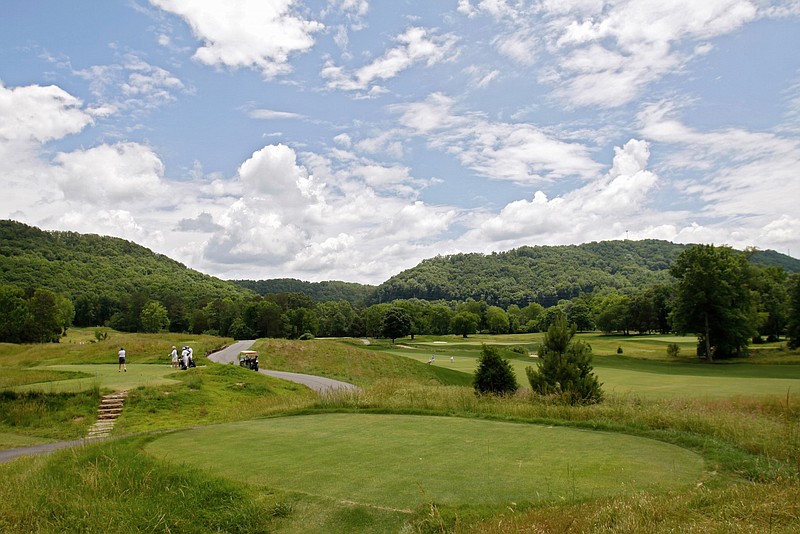The Honors Course, a golf Mecca in Ooltewah dreamed up by the late Coca-Cola magnate Jack Lupton in 1984 and developed by Hall of Fame architect Pete Dye, has been ranked by Golf Digest as the No. 31 course in all of America.
The course moved up three spots in the biannual rankings published last published in 2013 in large part to the introduction of Bermudagrass greens installed by course superintendent David Stone.
"We always come up with ways to enhance what we do, and maybe the raters are noticing constant things for improvement," head professional Henrik Simonsen said. "We're so very honored and pleased to have been moved up in the rankings."
The Honors Course -- created by Lupton for amateur golf -- has been the site of such illustrious tournaments as the U.S. Amateur in 1991 and the NCAA championships in 1996 and again in 2010, and most recently site of the 2014 Southern Amateur.
"We're still new compared to Augusta at No. 1, Pine Valley at No. 2 and Cypress Point and others in front of us," Simonsen said. "There's certain clubs you can't compete compete with.
"I think anything within the top 50 is a great honor."
In advance of the 25th anniversary of The Honors Course, Dye had glowing comments about his work beside White Oak Mountain.
"I love that place down there," said Dye in 2008. "When you're talking about your kids, you never say one is better than another. But there's nothing I've done better than that, and that's for sure."
The description of The Honors Course by Golf Digest has its merits and truths -- as well as weaknesses and untruths.
True: "Considered radical in the early 1980s because of its acres of tall, native-grass rough, unusual Zoysiagrass fairways and terrifying greens perched atop bulkheads of rock, The Honors Course is considered a well-preserved example of Pete Dye's death-or-glory architecture."
No doubt.
It toppled the best amateurs in the world late last summer during the Southern Amateur -- one of the top three amateur tournaments this side of the Atlantic Ocean.
The top six players heading into the final round combined to record scores of bogey, double-bogey, triple-bogey, and even a quintuple bogey in the final round.
It has also tested the likes of Tiger Woods, Patrick Reed and Luke Donald during their amateur careers.
The inaccurate description of the course in the magazine's report follows: "Other than reducing the contours in a couple of greens (particularly the 18th) in the late 1990s, Dye has left the course alone. One suspects he might return someday to perform some updates."
Dye has returned every year to confer with Stone -- the only superintendent the course has known and a member of the Tennessee Golf Hall of Fame -- as well as the membership to make slight alterations.
Since the 2005 U.S. Mid-Amateur, Dye altered the 11th hole by re-shaping the green and adding a new teeing ground. Later, Dye oversaw a change on No 10 which lengthened the hole by at least 50 yards and changed the preferred angle of approach from the right --a where now a bunker come into play -- to the preferred left side favoring a good drive down that side that avoids a bunker, or perhaps worse, native Tennessee grassland.
The short note on The Honors Course also failed to mention the switch that Stone and the course made to Bermudagrass greens which increased the difficulty of the course during hot summer months.
"I'd like to think that it's the conditions of our greens maintained by David that moved us up," Simonsen said. "The layout has always been fantastic."
Contact David Uchiyama at duchiyama@timesfreepress.com or at 423-757-6484. Follow him on Twitter at twitter.com/UchiyamaCTFP.
